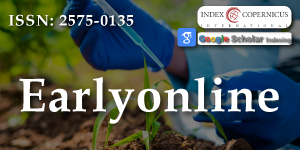Genetic Diversity Preservation: Integrating Human Genetic Banking with Plant Sciences
Main Article Content
Abstract
This study aims to explore the intersection between human genetic banking and plant sciences, highlighting shared methodologies, goals, and ethical considerations. Methods:
A comparative literature review was conducted analyzing cryopreservation techniques, genetic diversity preservation strategies, and ethical frameworks in both human and plant genetic resources. Results: Both fields employ similar cryopreservation protocols, long-term storage strategies, and genetic analysis tools. Human genetic banking focuses on preserving DNA, reproductive cells, and somatic tissues, while plant sciences utilize seed banks, in vitro tissue cultures, and cryopreservation to maintain endangered species and agricultural varieties. Conclusions: Integration of human and plant genetic banking practices offers potential for methodological exchange, improved conservation strategies, and interdisciplinary collaboration. Ethical considerations, including consent, privacy, and access to genetic resources, are central in both domains.
Article Details
Copyright (c) 2025 Grzegorczyk M.

This work is licensed under a Creative Commons Attribution 4.0 International License.
1. Campbell, P., et al. (2019). Human Genetic Biobanking: Principles and Applications. Springer.
2. FAO. (2010). The Second Report on the State of the World’s Plant Genetic Resources for Food and Agriculture. Rome: FAO.
3. Tomasetti, C., & Vogelstein, B. (2015). Variation in cancer risk among tissues can be explained by the number of stem cell divisions. Science, 347(6217), 78–81.
4. Hoban, S., et al. (2016). Conservation genetics and the maintenance of biodiversity. Biological Conservation, 203, 103–112.
5. Fuller, B. J., et al. (2004). Cryopreservation and Freeze-Drying Protocols. Humana Press.
6. Li, D. Z., & Pritchard, H. W. (2009). The science and economics of ex situ plant conservation. Trends in Plant Science, 14(11), 614–621.
7. Steptoe, P. C., & Edwards, R. G. (1978). Birth after the reimplantation of a human embryo. The Lancet, 312(8085), 366.
8. Bates, S. (2018). Ethics in human biobanking. Journal of Medical Ethics, 44(4), 1–6.
9. Ellegren, H. (2014). Genome sequencing and population genomics in non-model organisms. Trends in Ecology & Evolution, 29(1), 51–63.
10. Neale, D. B., & Kremer, A. (2011). Forest tree genomics: growing resources and applications. Nature Reviews Genetics, 12, 111–122.
11. Caulfield, T. (2008). Biobanks and consent: The ethical landscape. Nature Reviews Genetics, 9(6), 395–401.
12. United Nations. (1992). Convention on Biological Diversity.

